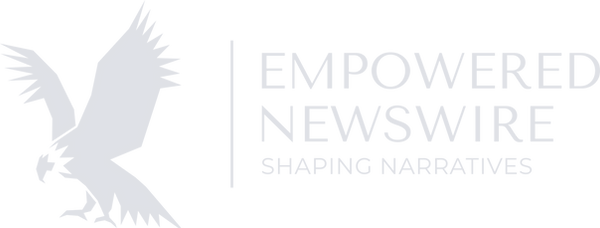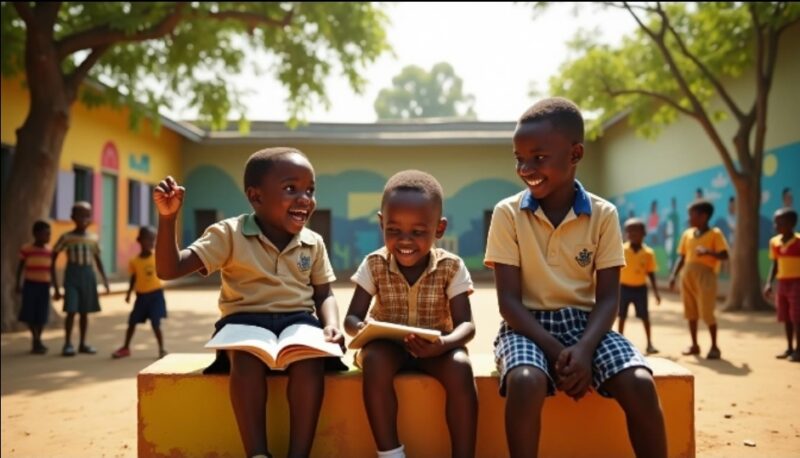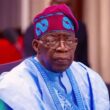By: Popoola Olasubomi Bernard – ChildPress Reporter
Children make up more than 40% of Nigeria’s population. This demographic reality makes the Child Right Act one of our vital pieces of legislation. The law directly affects millions of young lives throughout our nation. We need to understand how this landmark law shapes Nigerian children’s future.
The Child Right Act stands as a milestone that protects our young citizens. Over the last several years since its introduction in 2003, states have shown mixed results in implementation. The complete legislation covers every aspect of child protection laws in Nigeria. It deals with child labor, early marriage, and ensures children can access education and healthcare.
This piece will help you understand the basic principles and strategies that protect Nigerian children’s rights and welfare. We have a long way to go, but we can build on this progress to overcome the current challenges.
Historical Context and Development
The rise of child rights protection in Nigeria dates back to the pre-World War II era. This experience started when the world recognized that children needed special protection, despite the widespread belief that adults naturally acted in children’s best interests [1].
Origins of Child Rights Protection in Nigeria
Nigeria’s formal child protection emerged through the Children and Young Persons Act (CYPA) of 1943. This innovative legislation marked the country’s first step toward legal protection of children [2].
The Governor in Council enacted CYPA as a national law for Nigeria’s protectorates [1]. CYPA became Chapter 31 of the Laws of Nigeria in 1948, and later transformed into Chapter 32 of the Laws of the Federation of Nigeria and Lagos by 1958 [2].
Process of Enacting the 2003 Act
The path to the Child Rights Act had several major milestones:
- 1992: The National Commission for Women developed the first draft
- 2002: The bill was first introduced
- 2003: The National Assembly passed it into law
- September 2003: Chief Olusegun Obasanjo gave presidential assent
The process faced opposition from many groups, including the Supreme Council for Shari’a [3]. National stakeholders and international organizations applied persistent advocacy and media pressure to achieve this legislative milestone [3].
International Influences and Standards
International frameworks have shaped Nigeria’s child protection laws by a lot. The United Nations Convention on the Rights of the Child and the African Charter on the Rights and Welfare of the Child played vital roles in shaping the legislation [4].
The African Charter, adopted in 1990, emphasized human rights for children of African descent [1].
The Act’s complete nature reflects the commitment to international standards, with 278 sections of vital importance [1]. The federal system creates unique challenges because each state must domesticate the law independently.
Recent records show 25 out of 36 states have localized the Child Rights Act, but 11 states in northern Nigeria have yet to adopt it [4].
The Act brought major changes to the legal framework. It standardized the definition of childhood to persons under eighteen years, though this sometimes conflicts with other existing laws [3]. The National Child Rights Implementation Committee now identifies priorities like safe water supply, HIV/AIDS response, women’s employment, universal basic education, and better primary healthcare [3].
Key Provisions and Protections
Let’s look at the key provisions of our Child Rights Act (CRA). This complete framework aims to protect and promote Nigerian children’s welfare. Here’s what this landmark legislation offers in terms of protections and rights.
Fundamental Rights of Nigerian Children
The Child Rights Act guarantees several inalienable rights to every Nigerian child. These fundamental rights include:
- Right to survival and development
- Right to a name and dignity
- Freedom of association and peaceful assembly
- Right to private and family life
- Right to freedom of movement
- Freedom from discrimination
- Right to leisure, recreation, and cultural activities [5]
Protection Against Harmful Practices
The Act shields our children through strict measures against harmful practices. Anyone who arranges child marriage or betrothal faces up to five years in prison, a N500,000 fine, or both [5]. The law also prohibits exploitative practices like tattoos or skin marking. Offenders could spend one month in jail or pay a N5,000 fine [5].
The legislation takes a strong position against child labor and trafficking. Using children as domestic help outside their family now carries a five-year prison term or a N5,000 fine. The law imposes a ten-year sentence on anyone who buys, sells, or uses children for hawking, begging, or prostitution [5].
Educational and Healthcare Rights
Education stands as a fundamental right – free, compulsory, and universal for all Nigerian children [6]. Every child deserves the best possible physical, mental, and spiritual health [7]. Parents, guardians, and the government must:
- Reduce infant and child mortality rates
- Provide necessary medical assistance and healthcare services
- Ensure adequate nutrition and safe drinking water
- Curb disease and malnutrition through primary healthcare
- Support expectant and nursing mothers [7]
The child’s best interest guides all actions by individuals, public or private bodies, institutions, courts, or administrative authorities [6]. Through collaboration between government, communities, and schools, children in special circumstances receive protection and equal access to quality healthcare [8].
Implementation Framework
The Child Rights Act implementation framework in Nigeria takes a layered approach that ensures detailed child protection nationwide. The National Child Rights Implementation Committee (NCRIC) leads our efforts to coordinate child protection measures throughout the country.
National Implementation Committee
We have created a resilient national committee structure that works to protect and promote children’s rights. The NCRIC shows its dedication through regular quarterly meetings and focuses on periodic reporting requirements [9]. Our committee has identified five vital priorities:
- Establishing safe water supply and sanitation
- Addressing the HIV/AIDS epidemic
- Creating job opportunities for women
- Providing universal basic education
- Strengthening primary healthcare systems [3]
The committee works with key stakeholders to implement these priorities:
- Ministries of Education, Health, and Justice
- National Bureau of Statistics
- National Population Commission
- Non-Governmental Organizations
State Child Rights Committees [9]
State-Level Mechanisms
24 out of 36 states have adopted the Child Rights Act [10]. This represents major progress at the state level. Local committees work with the national framework [11] and serve as vital links between federal policies and local implementation. These efforts help child protection measures reach every part of our nation.
Monitoring and Evaluation Systems
Our monitoring and evaluation framework has both successes and challenges. Studies show that 68.75% of the Child Rights Law has been implemented [12]. We recognize that implementation capacity needs improvement [3]. A detailed reporting system tracks periodic reports on child rights protection and promotion [9].
The National Human Rights Commission investigates cases from early stages of child development. Our innovative approach looks at children’s rights from the prenatal period. We understand that a mother’s well-being directly shapes child development [10]. Schools have ‘human rights clubs’ that help spot and address potential violations [10].
Implementation effectiveness varies across ethnic lines because of different religious and cultural beliefs [13]. Citizens can report violations through our open-door policy without needing legal representation [10]. This approach helps us track and respond to child rights violations while respecting cultural sensitivities.
State-by-State Analysis
The Child Rights Act implementation shows a varied picture throughout Nigeria’s 36 states. Data reveals substantial progress, as all but one of these states have adopted the Child Rights Act [14].
Status of Adoption Across States
The last few years have brought remarkable changes, especially in northern states. By 2023, new states joined the list of adopters:
- Borno (January 2022)
- Kano (May 2023)
- Yobe (May 2022)
- Zamfara (August 2022) [15]
This marks a fundamental change from 2019 when only 13 states had adopted the Act [14]. The Minister of Women Affairs works actively with stakeholders, traditional rulers, community leaders, and religious authorities to promote adoption in remaining states [14].
Regional Variations in Implementation
Each region shows different patterns in how well the Act works. Northern states face their own set of challenges because of:
- Religious views on child marriage
- Cultural practices that affect implementation
- Different ways of defining childhood
- Conflicts between traditional and modern law [4]
States differ substantially in how they implement the Act, especially in defining childhood. The Child Rights Act sets 18 as the age threshold for childhood, yet state laws often use different age limits [16].
Success Stories and Challenges
Child Protection Networks have achieved soaring wins by bringing various stakeholders together. These networks bring together dedicated Nigerians who want to stop child abuse [17]. Yet some big problems remain:
Implementation Gaps:
- Child labor continues despite existing laws and policies
- Some regions still practice female circumcision
- Early marriage remains common in certain areas
- Reports of sexual violence continue [18]
Resource Constraints:
- Funding falls short for implementation
- Staff training needs improvement
- Institutional frameworks need strengthening [19]
Healthcare workers stand at the forefront of protecting children’s rights. Research indicates that 68% of healthcare workers know about the UN Convention on the Rights of the Child. Their knowledge improves based on age, marriage status, and years of medical practice [18].
Legal Enforcement Mechanisms
Nigeria protects its children through a sophisticated legal system that includes courts, officers, and procedures. Let’s get into how these elements work together to safeguard our young ones.
Role of Family Courts
A two-tiered court system handles children’s matters specifically. Family Courts function at both High Court and Magistrate Court levels [20]. These courts have unlimited jurisdiction to hear and determine:
- Civil proceedings concerning legal rights, powers, duties, and privileges that affect children
- Criminal proceedings with offenses committed by, against, or affecting children’s interests [20]
Family Courts stand out because of their child-centered approach. Children and their parents or guardians receive explanations about court proceedings in their native language [20]. This practice helps everyone understand the process better.
Child Protection Officers
Child Protection Officers stand at the forefront of defending children’s rights. These professionals handle several significant duties:
- They implement and oversee child protection initiatives
- They assess risks to identify potential threats
- They build capacity among staff and partners
- They provide vital psychosocial support [21]
These officers work closely with key stakeholders such as:
- Ministry of Women Affairs and Social Development
- Ministry of Humanity and Social Welfare
- Community and religious leaders
- Local authorities [22]
Reporting and Investigation Procedures
A complete investigation protocol puts children’s well-being first. The procedure follows these vital steps when someone reports a child-related incident:
1. Immediate Notification: Parents or guardians learn about their child’s apprehension right away [20]
Background Investigation: Cases beyond minor offenses need thorough investigations that cover:
- Social and family background
- School career and educational experience
- Living circumstances
- Circumstances surrounding the alleged offense [20]
2. Social Inquiry Report: Officers create detailed reports about the child’s life to make decisions that serve the child’s best interests [20]
The National Human Rights Commission welcomes violation reports without requiring legal representation [10]. This approach works well, as shown by recent data where people filed over 22,550 complaints about child rights violations in just eight months [23].
Protection of children’s rights goes beyond enforcement. Police officers who handle children’s cases receive specialized training to ensure appropriate treatment throughout the legal process [3]. This approach shows our steadfast dedication to upholding the Child Rights Act while protecting every child’s dignity during legal proceedings.
Challenges and Obstacles
We have made progress in implementing the Child Rights Act, yet we face several tough obstacles that affect our efforts to protect Nigerian children’s rights. These issues just need immediate attention and practical solutions.
Cultural and Religious Opposition
Our trip to implement the Child Rights Act has met strong resistance, especially in northern Nigeria. The Supreme Council for Shariah in Nigeria and several northern legislators have labeled our Child Rights Act as anti-culture, anti-tradition, and anti-religion [4]. The core team has identified these religious concerns:
- Child marriage practices, especially regarding girls aged 10-12 years
- Freedom of religion for children
- Differences in inheritance rights between male and female children
- Islamic prohibition of adoption versus the Act’s adoption provisions
- Corporal punishment restrictions viewed as un-Islamic [4]
Religious tensions become clear in matters of child marriage. The Act’s definition of childhood (below 18 years) clashes with religious practices that see puberty as the deciding factor for marriage readiness [4].
Resource and Capacity Constraints
Resource limitations create major hurdles in implementing the Child Rights Act. Child welfare programs lack proper resources [24], which affects implementation through:
- Insufficient funding for program execution
- Limited capacity building opportunities for professionals
- Inadequate coordination among multi-agency frameworks
- Poor monitoring and evaluation systems
Weak compliance enforcement mechanisms [24]
Many Nigerian children don’t receive their entitled protections and services because of these constraints [24]. Implementation capacity remains nowhere near adequate, especially when you have to coordinate the multi-agency framework needed to work effectively [24].
Jurisdictional Conflicts
Legal contradictions make enforcement complicated. To cite an instance, see the conflict between different legal frameworks:
The Child Rights Act clashes with other national laws. The Act defines a child as anyone under eighteen, which contradicts the Young Person’s Act’s definition of fourteen [3]. These differences create major challenges in legal interpretation and enforcement.
The biggest problem lies in states that haven’t adopted the Act. Eleven Northern States have not domesticated the Child Rights Act [25], which leaves children in these regions exposed to:
- Early marriage
- Child begging
- Female genital mutilation
- Other harmful traditional practices [25]
We can’t solve the problems of jurisdiction easily because we need constitutional amendments, which face similar obstacles as the Child Rights Act [4]. Success depends on working with religious and traditional leaders, who are vital ‘gatekeepers’ in our communities [4].
Impact Assessment
The Child Rights Act has been in place for 20 years, and we need a full picture of what this groundbreaking law has achieved. Our evaluation shows we have a long way to go, but we can build on this progress in protecting Nigerian children’s rights.
Changes in Child Protection Statistics
The latest numbers tell a troubling story about child protection in Nigeria. 67.5 million children live in poverty without basic services like healthcare, education, food, and sanitation [26]. The situation looks even worse with 10.5 million children not in school [26], and 15 million working as child laborers [26].
These numbers reveal how serious child protection violations are:
- Sexual abuse affects one in four girls and one in ten boys, mostly by relatives [26] 43% of girls end up in forced marriages before turning 15 [26]
- Terrorist groups have recruited about 8,000 children as soldiers [26]
- Six in ten children face emotional, physical, or sexual violence every day [27]
Social Attitude Transformations
Social attitudes have changed, but not as quickly as predicted. People understand children’s rights better now, especially in cities. Yet we still face pushback from traditional practices that harm children’s wellbeing [28]:
- Child marriage and betrothal
- Female genital mutilation
- Child labor practices
- Denial of inheritance rights
- Exploitation through begging and hawking
The good news is public opinion has started to shift. Communities now believe that children deserve to grow up in happy, safe, healthy, and productive environments [27]. We keep reminding everyone that children are our most vulnerable group and need special protection in social policy [27].
Economic Implications
The Act’s economic effects reach beyond just protecting children. Several economic factors shape our progress:
Resource Allocation Challenges:
- Not enough funding for programs
- Too few people to monitor progress
- Basic support services need better infrastructure [28]
Long-term Economic Effects:
- Child labor reduces workforce productivity
- Child abuse creates healthcare costs
- Out-of-school children strain the education system [28]
Protecting Nigerian children from violence creates positive ripples throughout our society and economy [27]. Today’s investment in child protection will help us reach sustainable development goals and create lasting peace [27].
The United States Department of Labor recognizes our work against child labor through law enforcement. Yet we still need more resources [29]. This becomes harder because minimum age work rules don’t cover self-employed children or those in informal jobs [29].
These challenges haven’t weakened our commitment to better child protection systems. We’ve created stronger child protection laws and strategies [27]. Our counseling sessions help affected children and their families recover and rejoin society [27].
Future Perspectives
Nigeria’s child rights protection future depends on making existing frameworks stronger and creating new implementation strategies. The House of Representatives has already committed to change the Child Rights Act. These changes will give sexually abused children better protection [30].
Proposed Amendments
Several vital amendments will strengthen our child protection framework. The House of Representatives will provide legislative support through budgetary approvals to concerned ministries [30]. Our changes target:
Enhanced Protection Measures:
- Better legal safeguards for sexually abused children
- Better investigation and prosecution procedures
- More support services for victims
- Tougher penalties for offenders
- Better reporting systems
These changes address gaps we found through years of experience. Support needs to reach 24 out of 36 states that have adopted the CRA for better implementation [10].
Integration with SDGs
Human rights and sustainable development work together and strengthen each other [31]. We connect the Child Rights Act with Sustainable Development Goals through:
- Poverty reduction and social protection
- Quality education access
- Healthcare improvement
- Gender equality promotion
- Child protection system strengthening
A human rights approach helps implement the SDGs better. We found that not implementing the Child Rights Act hurts Nigeria’s sustainable development [31]. Current
numbers show worrying trends: 39% of children between 5-14 years work as child labor, and 40% of Nigerian children miss primary school [31].
Advocacy Initiatives
Our advocacy efforts now reach more people through multiple channels. UNICEF leads by teaching child rights reporting in journalism education. 50 universities across Nigeria now include child rights reporting in their programs [30]. Our advocacy strategy includes:
Journalism education now has special courses about child rights. Future journalists will know how to report child-related issues properly [30]. The Child Rights Reporting Curriculum helps cover children’s rights issues across Nigeria [30].
The National Human Rights Commission runs ‘human rights clubs’ in schools. These clubs expose hidden cases of child abuse and exploitation [10]. Boys and girls can both face abuse, and these clubs help prevent it [10].
Our future plans include:
- Better journalism education with special child rights reporting
- Teaching lecturers how to cover child rights effectively
- Training more students in child rights reporting
- Building stronger media partnerships
- Creating better monitoring systems
We need to address some scary numbers: 43% of women aged 20-24 married before 18, and about 1,800,000 AIDS orphans in Nigeria might face trafficking [31]. Future programs will help these vulnerable groups through targeted support.
The National Human Rights Commission protects every child in Nigerian states [10]. Anyone can get free services without needing a lawyer [10]. This makes child protection available to everyone, whatever their financial situation.
Conclusion
Nigeria’s commitment to protecting children’s future started with the Child Rights Act in 2003. The last two decades show remarkable progress. All but two states now embrace this vital legislation. The reality remains challenging though – 67.5 million children live in poverty and 10.5 million don’t attend school.
States of all sizes prove the Act works when people implement it properly. Family courts operate well now. Child protection officers work hard to safeguard children’s interests. Quick reporting systems help catch violations early. These wins show how communities can create positive change when they unite to protect children.
Religious and cultural beliefs shape how we implement the Act, especially when you have northern Nigeria’s unique context. Limited resources and conflicts between jurisdictions
create ongoing problems. We have a long way to go, but we can build on this progress through proposed changes and alignment with Sustainable Development Goals.
Recent changes bring hope.
Fifty universities now teach specialized child rights coverage in journalism programs. Human rights clubs in schools teach students about abuse and exploitation. The National Human Rights Commission keeps its doors open to help all citizens.
The road ahead needs more work. Numbers tell a sobering story – 43% of young women marry before 18, and 15 million children work instead of study. This just needs immediate action. Our steadfast dedication goes beyond laws. We aim to build an environment where every Nigerian child’s right to education, healthcare, and safety becomes reality.
This mission to change children’s lives needs constant support from everyone – government officials, religious leaders, community groups, and citizens. Together, we can create a Nigeria where children flourish, protected by strong laws and supported by communities that value their rights and well-being.
References
- https://journals.ezenwaohaetorc.org/index.php/JIHRCLI/article/download/1873/ 1904
- https://www.researchpublish.com/upload/book/paperpdf-1630669561.pdf 3.
- https://en.wikipedia.org/wiki/Child_Rights_Act_in_Nigeria
- https://theconversation.com/why-the-childs-rights-act-still-doesnt-apply- throughout-nigeria-145345
- https://www.linkedin.com/pulse/14-basic-rights-nigerian-child-akinola-oladimeji
- https://placng.org/lawsofnigeria/laws/C50.pdf
- https://journals.ezenwaohaetorc.org/index.php/NCEP/article/download/1086/10 88
- https://platform.who.int/docs/default-source/mca-documents/policy- documents/policy/nga-cc-10-03-policy-2018-eng-nat-ch-health-policy.pdf
- https://von.gov.ng/child-rights-committee-set-to-harmonize-child-protection- laws/
- https://nigeriarights.gov.ng/focus-areas/child-rights.html 12.
- https://fida.org.ng/wp-content/uploads/2020/11/CHILD-FRIENDLY-JUSTICE- SYSTEM.pdf
- https://www.ajol.info/index.php/afrrev/article/view/64515
- https://www.ashberlin.eu/fileadmin/Daten/Masterstudiengaenge/SWHR/Iduoze_ Evaluation_of_Child_Rights_Act_Implementation_in_Nigeria.pdf
- https://www.thisdaylive.com/index.php/2022/11/29/fg-34-states-have- domesticated-childs-rights-act/
- https://www.partnersnigeria.org/childs-rights-law-tracker/
- https://www.financialnigeria.com/ensuring-the-child-s-rights-act-protects- nigerian-children-blog-699.html
- https://barhumanrights.org.uk/wp-content/uploads/2013/12/The-Child-Rights- Manual_Nigeria-29.10.13.pdf
- https://pmc.ncbi.nlm.nih.gov/articles/PMC10262854/
- https://marieclaire.ng/lets-talk-about-nigerias-not-so-hidden-child-rights-crisis/
- https://www.ajol.info/index.php/naujilj/article/view/82391/72546
- https://ngojobsite.com/child-protection-officer-roosc-at-save-the-children-nigeria/
- https://nigeria.savethechildren.net/careers/details?jid=6536
- https://fij.ng/article/data-nigerian-parents-culprits-commit-43740-child- violations-the-most-in-7-months/
- https://hull-repository.worktribe.com/output/4260904/a-case-study-of-lived- experience-of-the-implementation-of-child-rights-act-2003-in-nigeria
- https://lawpavilion.com/blog/an-overview-legal-rights-of-a-child-in-nigeria/
- https://dailypost.ng/2023/09/23/nigerias-implementation-of-child-rights-act-still- at-zero-experts/
- https://bbforpeace.org/blog/2020/06/20/protecting-the-nigerian-child-from- violence/
- https://saudijournals.com/media/articles/SIJLCJ_44_252-261_euYpR1a.pdf
- https://www.ajhssr.com/wp-content/uploads/2023/04/P22704170175.pdf
- https://www.thisdaylive.com/index.php/2024/10/11/girl-child-day-reps-to- amend-childs-rights-act-to-protect-sexually-abused-children/
- https://ic-sd.org/wp-content/uploads/2020/11/David-Nwogbo.pdf







